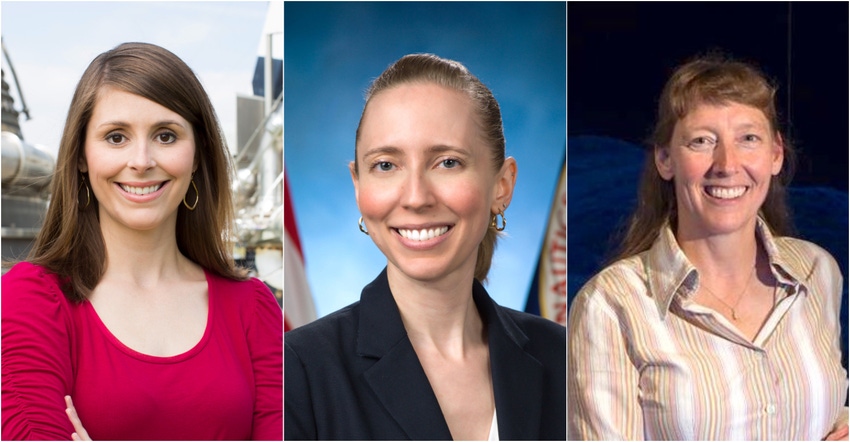Three women with three different approaches to working for NASA.

What more high-profile way to showcase women’s contributions to science, technology, and engineering than the International Space Station, which most of us can see periodically if we look up at the sky at the right time?
NASA has a trio of women whose contributions to ISS program led to the agency providing some details on their work on the agency’s web site. They are Rebekah Anchondo, Suzanne Hansen, and Amy Ross, who each contributes to a different area of the ISS’s operations.
Anchondo holds a bachelor’s degree in aerospace engineering and a master’s in systems engineering (both from the University of Texas), which she employs in her role as a private astronaut mission integrator in the ISS Program’s Commercial Integration Office. She likes to remind students that they don’t have to be classic tinkerers to become NASA engineers.
“I was never the type of person to tinker with machines or build extravagant structures with toy blocks, Anchondo explained in NASA’s post. “However, I did love solving problems and doing puzzles, which is likely why I love the problem-solving aspect of engineering. The engineering industry is incredibly broad, and it is not ‘one size fits all.’ The important thing is finding a career that interests you and inspires you to come to work every day and solve problems.”
Anchondo’s on-ramp for an engineering career at NASA was working as a co-op intern for NASA contractor United Space Alliance. She trained as a Space Shuttle Propulsion Systems Flight Controller for that internship and upon graduation, she joined USA, where she worked until joining NASA as the ISS’s vehicle configuration lead in 2019.
Anchondo advises aspiring engineers to talk to people working in various industries to get a feel for which area will interest them. “By speaking to people in the petroleum and aerospace engineering industries, I was able to gain insight into examples of work that may be performed,” she said. “Additionally, participating in engineering camps during high school gave me exposure to different aspects of engineering to further help me determine which specialty to pursue.”
Suzanne Hansen came to the space program as a student intern for a contractor too. She worked for Boeing, first as a student and then after graduation in the Vehicle Integrated Performance and Resources (VIPER) console in mission control’s Mission Evaluation Room (MER). She helped develop plans for feathering the station’s solar panels to prevent them from overloading or getting contaminated during dynamic manuevers.
This led to Hansen’s promotion to managing the MER for NASA before ultimately moving on to becoming a NASA civil servant. Not everyone who would like to attend NASA’s famous Space Camp is able to go, but Hansen says that she was motivated just by watching the Space Camp movie as a kid.
When it came time to pick a major in college, she recognized some of the tasks from space camp, which made it easier, she said. “I saw aerospace engineering in the list. It seemed like the perfect fit, particularly when I saw the list of classes that I would be taking including orbital mechanics and mission design.”

Amy Ross, on the other hand, was born into the NASA family, as the daughter of an astronaut and a NASA support employee. Today Ross is a spacesuit designer for NASA. However, Ross emphasizes to students that this familiar proximity is not necessary for getting a technical job with the space agency.
“We come in all shapes and sizes from all kinds of places,” she stated. “One of my colleagues is from a small town in Kansas. She didn’t have the benefit, as I did, of knowing the people who worked at NASA first-hand as my neighbor, Sunday school teacher, et cetera. People in her community didn’t know that someone like her, from a little town like theirs could do it. She decided she would and she did.”
Having that proximity might have sparked Ross’s interest, but she still worked to earn her way in, with Mechanical Engineering undergraduate and Master’s degrees from Purdue University and a Master’s in Space Studies from University of North Dakota.
“It can sound out-of-reach because it’s intimidating,” Ross noted. “I was not a math whiz in high school. I found English to be a much easier subject than physics, chemistry, or calculus. Hard work compensates for a lack of innate talent.”
About the Author(s)
You May Also Like





